Personality radio success is based on being recognizable, without becoming predictable. How to produce a consistent radio show that sounds original and fresh every single day?
Radio personalities Giel Beelen and Ida Ebbengaard both use listeners as sidekicks for “push & pull” crowd sourcing and audience interaction. They shared some of their best practices for this during the ‘My Show On The Radio’ session at Radiodays Europe 2012, where I took some notes for you.
“What you would like to be is recognizable –
what you don’t want to be is predictable”
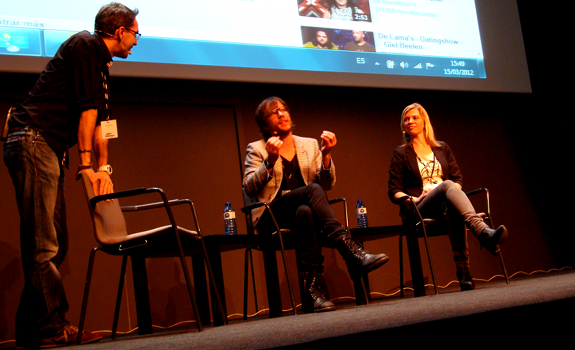
RAI Radio 2 presenter Filippo Solibello (session host, standing) talks with 3FM personality Giel Beelen and P3 talent Ida Ebbengaard about their prime time shows at Radiodays Europe 2012 in Barcelona (photo: Thomas Giger)
Prep your show well
Giel Beelen presents the morning show GIEL on 3FM, the Pop-Rock CHR station of the Dutch national public broadcaster. His day starts at 4:45 AM with a 45-minute drive to his work. “When I drove myself, it was 30 minutes, but there were some problems with my license…” (audience laughs). He now has a chauffeur, which allows him to read the morning paper and do some show prep before arriving in the studio at 5:30. There he meets with his team of 4 producers. GIEL is broadcasted from 6 to 10 AM on the radio, simulcasted on TV and webcasted through the interactive social radio player on the station website.
 Enhance audio content visually
Enhance audio content visually
3FM’s morning show still is first and foremost a radio program. “Radio is my thing”, says Giel Beelen, who deliberately doesn’t speak directly to the viewer. “It’s difficult to make radio when you’re aware of the fact that there are all these cameras.” But he also sees that visual radio is becoming the new standard. “Only audio is not enough anymore.” When he plays a song, its video plays simultaneously on a screen behind him in the studio.
Stay focused on radio
The radio program is visually enhanced by pop-ups and ticker tapes containing news, social media feeds, and the current time. According to Giel Beelen, “that’s enough. You don’t have to watch into the camera or do specific things”. “I think that’s a very good point”, Ida Ebbengaard responds. “Sometimes we tend to overdo things.” She’s one of the presenters of Pressen På P3, the drive time show of the Danish public broadcaster‘s music channel P3, weekdays from 4-6 PM. In her opinion, simple solutions like just putting webcams on can work as well, as quality content is what makes the difference.
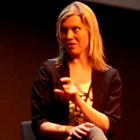 Put quality content first
Put quality content first
Ida Ebbengaard speaks of a “huge difference” between public broadcasters and commercial stations in Denmark in this regard. “What is easier than just give listeners crap? Sorry for my language. What we can do is enhance the level and give the audience quality.” Of course, they play a different game. As a public broadcaster, DR has resources that cannot be compared to those of most commercial stations in Denmark.
Get outside your studio
In collaboration between Egyptian and Danish media, Pressen på P3 covered the first free elections in Egypt in 30 years. Ida Ebbengaard and her colleague Tony Scott did a week of remote broadcasts from Cairo, with a team of 6 people. She feels like “it’s freedom that we can take some chances. We don’t have to look at the numbers every day.” It gives her and her colleagues room to try new things now and then. “Sometimes it doesn’t work and you just have to put it in the corner, and sometimes it’s just magic.”
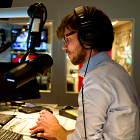 Combine news and entertainment
Combine news and entertainment
In his daily morning show on 3FM, Giel Beelen talks a lot about what’s going on in the news – while it’s basically a music driven station. “There are no borders anymore, because of the Internet. People look for news and entertainment; for them it’s the same. I really feel that young people are engaged with what’s going on in the world.” To him, it’s also a question of how you deliver it to the listener. “I do it in my own way. I think it’s the highlight of my show.”
Imagine several different listeners
Giel Beelen is aware of the fact that there are many different people listening to his radio show, depending on the time of the day – from school kids to a more grown-up audience. “In my mind I have different persons for which I make this program. I play rap records before 8 o’clock, because young people want to hear rap music.” The news part however sounds pretty consistent throughout the show, as he doesn’t read it himself – except for a funny story here and there. “I have the same news host every day. I don’t have sidekicks, but with her I can trigger; make jokes.”
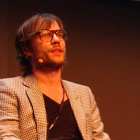 Interview agenda-setting personalities
Interview agenda-setting personalities
What works well for Giel Beelen is to call people who are making the headlines that day – it can be the prime minister as well. “This morning I called this really big guy of a right-wing party in Holland. He picked up the phone and said: well, I think this is Giel again. He knows that he’s on the front page and that I will call. He’s answering because he knows that a lot of young people listen to my show.”
Develop consistent, original benchmarks
Apart from talking about the news, Giel Beelen has several benchmarks. “When you make a show, you have to have recognizable items. What you would like to be is recognizable – what you don’t want to be is predictable. It’s a thin line”, he knows. One of his concepts is the GIEL-Mobiel (the Giel mobile). Beelen once bought a cell phone with a prepaid card, gave it to a Dutch celebrity and requested to pass it on to another well-known person, without telling him who. And a popular benchmark was born!
Be recognizab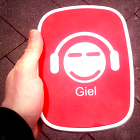 le – not predictable
le – not predictable
“Every morning at the same time, for seven years now, I call this same mobile phone. Celebrities pass it on to each other. It’s really recognizable because you know: it’s 8:45 and I’m calling the GIEL-Mobiel.” The strong part is that both he and the audience have not a clue who will answer the phone and what will happen. Giel Beelen’s advice for every radio personality is to “find what’s good, not predictable, but really recognizable.”
Maximize your audience interaction
The audience plays a prominent role in his show. “I have no sidekick; listeners are my sidekicks. People are texting back and forth all the time, because I really do something with it in the show.” Where for Giel Beelen social media trigger the most response, Ida Ebbengaard of P3 still gets a lot of plain old text messages from listeners, who are often traveling by bus or car. “We use both push and pull. Push is when we say to them: give us some text message. Sometimes we’re asking something quite difficult or ethical; we talked about suicide recently. And then there’s the pull; they just text us all the time.”
Have response-triggering opinions
Ida Ebbengaard is noticing that listeners respond very quickly to what presenters say on the air. “There was a little boy missing in Denmark almost a year ago, which was a massive, massive, massive story in the news. I just happened to say that perhaps it was a little exaggerated with the coverage… and whoop; five hundred text messages!” In Denmark, texting is still more popular than a free service like Twitter.
Treat listeners like friends
Do they feel any pressure of having a responsibility, as so many people listen to their daily shows? “Come on, we’re not doing a speech to our listeners”, Ida Ebbengaard replies. The P3-presenter says that “we’re not like their teachers telling them what they should care about. When we talk to our audience, we talk to our friends. But being a professional host is taking responsibilities, too. You know by yourself that you have a backbone of quality and a bullshit detector, and that you hopefully also make a show that they enjoy.”
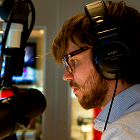 Be you – not perfect
Be you – not perfect
Her Dutch colleague Giel Beelen says that he actually doesn’t want to be perfect at all. “I’m the opposite of a role model in my country. When I started in radio as a young boy, I was really ‘playing the deejay’, you know.” Then he noticed that when he did make a human mistake, listeners responded. “From that moment on I thought: well, whatever, I can make mistakes in my show, because I am being myself. I don’t feel the urge to be the good guy.”
Read also:
Stay tuned, follow us @RadioILOVEIT and click below to share this post:

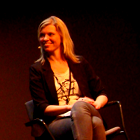




Add Your Comment